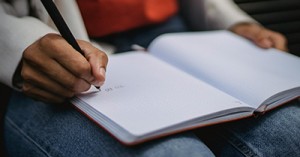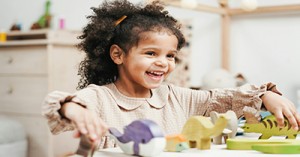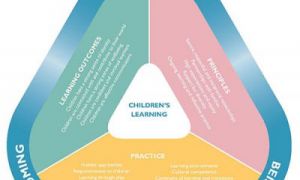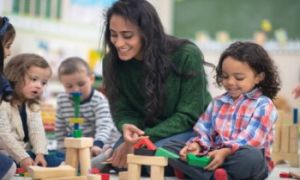Safe language in documentation is more than just avoiding sensitive disclosures—it’s about writing in a way that protects children’s dignity, fosters trust with families, and upholds the professional integrity of educators. Here’s a guide to help you embed safe, respectful, and pedagogically sound language into your group and individual observations.
What Is Safe Language?
Safe language refers to documentation that:
- Protects confidentiality (no full names, diagnoses, or family details)
- Avoids deficit framing (no labeling or judgment)
- Uplifts and validates children’s efforts and emotions
- Uses inclusive, strengths-based phrasing
- Aligns with ethical and regulatory standards
Safe Language Examples
| Risky Language | Safe Alternative |
|---|---|
| “Ella was disruptive and refused to join in.” | “Ella expressed her need for autonomy and chose to observe the activity from a distance.” |
| “Jayden can’t count past three.” | “Jayden is developing his understanding of number sequences and confidently counts to three.” |
| “Ava didn’t speak and seemed withdrawn.” | “Ava engaged non-verbally and observed her peers with interest.” |
| “Liam hit another child and had to be removed.” | “Educators supported the group through a moment of emotional intensity, guiding respectful interactions.” |
Key Principles for Safe Documentation
1. Focus on Behaviors, Not Labels
- Describe what you see, not what you assume.
- Avoid terms like “naughty,” “shy,” “aggressive,” or “behind.”
2. Use Strengths-Based Language
- Highlight effort, curiosity, persistence, and emerging skills.
- Frame challenges as opportunities for growth.
3. Be Emotionally Intelligent
- Acknowledge feelings without judgment.
- Use warm, validating language that reflects empathy.
4. Maintain Confidentiality
- Use first names only (or initials/pseudonyms if sharing externally).
- Avoid referencing family situations, diagnoses, or sensitive histories.
5. Respect Cultural and Neurodiverse Perspectives
- Avoid assumptions about developmental norms.
- Use inclusive language that honors diverse ways of engaging.
Example Rewrite
Original:
“Only Noah was able to complete the puzzle. The others gave up quickly.”
Safe Version:
“Noah demonstrated persistence in completing the puzzle, while others explored different strategies and engaged with the materials in varied ways.”
Safe Language Sentence Starters & Phrases
Here's a curated list of safe language sentences designed for early childhood documentation—especially useful in group observations, learning stories, and educator reflections. These phrases uphold confidentiality, avoid deficit framing, and reflect emotionally intelligent, strengths-based practice.
Developmental Progress
- “Children are developing confidence in…”
- “Demonstrated emerging skills in…”
- “Explored concepts through hands-on engagement…”
- “Showed curiosity and persistence when faced with a challenge…”
- “Engaged in problem-solving with support from peers and educators…”
Cognitive & Inquiry-Based Learning
- “Children investigated cause and effect by…”
- “Demonstrated early scientific reasoning through…”
- “Used trial and error to explore new strategies…”
- “Shared ideas and predictions during the experience…”
- “Displayed creative thinking and flexible approaches…”
Communication & Language
- “Expressed ideas through gestures, words, and play…”
- “Listened actively and responded to peers’ contributions…”
- “Used descriptive language to narrate their experience…”
- “Engaged in reciprocal conversations with peers and educators…”
- “Demonstrated growing confidence in expressing needs and preferences…”
Social & Emotional Development
- “Worked collaboratively, negotiating roles and responsibilities…”
- “Responded with empathy and care during peer interactions…”
- “Demonstrated resilience and self-regulation with gentle guidance…”
- “Celebrated group achievements with enthusiasm…”
- “Navigated social dynamics with increasing independence…”
Creativity & Expression
- “Explored materials with imagination and purpose…”
- “Used symbolic play to represent ideas and emotions…”
- “Created collaboratively, sharing tools and space respectfully…”
- “Expressed joy and pride in their creations…”
- “Demonstrated aesthetic awareness and attention to detail…”
Inclusive & Emotionally Safe Language
- “Each child engaged in their own way, contributing to the shared experience…”
- “Children responded to the activity with varied levels of interest and focus…”
- “Educators supported children’s diverse approaches to learning…”
- “The group demonstrated a range of emotional responses, all acknowledged with care…”
- “Children’s voices and choices shaped the direction of the experience…”
Safe language in documentation isn’t just a compliance measure—it’s a reflection of our values, our respect for children and families, and our commitment to ethical, emotionally intelligent practice. By choosing words that uplift, protect, and empower, educators create a culture of trust and transparency.
Further Reading
Pedagogical Documentation
Descriptive Words For Documentation, Observations and Reports
Early Childhood Theory Cheat Sheet For Documentation
EYLF Documentation Cheat Sheet for Educators
Involving Children in Documentation







 Here is the list of the EYLF Learning Outcomes that you can use as a guide or reference for your documentation and planning. The EYLF
Here is the list of the EYLF Learning Outcomes that you can use as a guide or reference for your documentation and planning. The EYLF The EYLF is a guide which consists of Principles, Practices and 5 main Learning Outcomes along with each of their sub outcomes, based on identity,
The EYLF is a guide which consists of Principles, Practices and 5 main Learning Outcomes along with each of their sub outcomes, based on identity, This is a guide on How to Write a Learning Story. It provides information on What Is A Learning Story, Writing A Learning Story, Sample
This is a guide on How to Write a Learning Story. It provides information on What Is A Learning Story, Writing A Learning Story, Sample One of the most important types of documentation methods that educators needs to be familiar with are “observations”. Observations are crucial for all early childhood
One of the most important types of documentation methods that educators needs to be familiar with are “observations”. Observations are crucial for all early childhood To support children achieve learning outcomes from the EYLF Framework, the following list gives educators examples of how to promote children's learning in each individual
To support children achieve learning outcomes from the EYLF Framework, the following list gives educators examples of how to promote children's learning in each individual Reflective practice is learning from everyday situations and issues and concerns that arise which form part of our daily routine while working in an early
Reflective practice is learning from everyday situations and issues and concerns that arise which form part of our daily routine while working in an early Within Australia, Programming and Planning is reflected and supported by the Early Years Learning Framework. Educators within early childhood settings, use the EYLF to guide
Within Australia, Programming and Planning is reflected and supported by the Early Years Learning Framework. Educators within early childhood settings, use the EYLF to guide When observing children, it's important that we use a range of different observation methods from running records, learning stories to photographs and work samples. Using
When observing children, it's important that we use a range of different observation methods from running records, learning stories to photographs and work samples. Using This is a guide for educators on what to observe under each sub learning outcome from the EYLF Framework, when a child is engaged in
This is a guide for educators on what to observe under each sub learning outcome from the EYLF Framework, when a child is engaged in The Early Years Learning Framework describes the curriculum as “all the interactions, experiences, activities, routines and events, planned and unplanned, that occur in an environment
The Early Years Learning Framework describes the curriculum as “all the interactions, experiences, activities, routines and events, planned and unplanned, that occur in an environment


